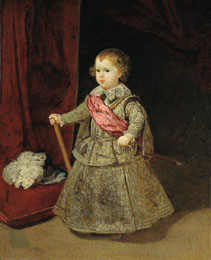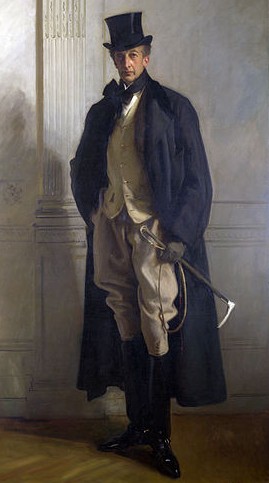By Kate Bradley 19 September 2013, 10:20AM
Someone asked me the other day if I preferred painting children or adults. Children, hands down, I said (no offense to all the grown-ups out there). For one, you don’t have to make them look younger, thinner or more beautiful. They are perfect just the way they are.
I was at the Dixon recently to see their current exhibit, Picturing America. My dear friend Julie was leading the tour. (Side note: If you have not been on a tour with Julie, stop what you are doing now and go. She makes learning about art so enjoyable and refreshing.) We stopped at a portrait of two European boys playing outside, one with a yo-yo. Julie told us that up until about the mid-eighteenth century, all children in portraits looked like small adults. Stiff, regally dressed, and very serious. Until that point, children weren’t considered individuals. Childhood was just a way to get to adulthood and so children were reflected in their portraits they way their parents wanted them to become.

The stuff of nightmares.This is a boy, btw. A boy with a walking cane.
Then things began to shift. Childhood began to be considered as a special time. Children were recognized as the individuals that they are, with their own personalities and interests. And so the portraits of children became much more lively and expressive, often depicting them in outdoors, associated with nature.

Meet Ansel. Ansel enjoys rabbits, decorative headwear, and macrame.
But seriously, HUGE improvement over Creepy Shrunken Person.
I had one of those “a-ha!” moments. Or rather, something I already new was reminded to me in a delightful way. This is the essence of what I do: celebrating childhood. I always seek to represent the individual personality of the children in my portraits, but I had never really considered why. I don’t just want to stick every child I paint in front of a garden- there are plenty of those portraits. I want their portrait to reflect who they are as individuals: their interests, their personalities, and their uniqueness. Why? Because childhood is special. Wow, I thought. What a privilege it is to get to paint these precious and fleeting moments. To preserve them forever in a commissioned work of art. I’m truly honored.

 By Kate Bradley 4 November 2013, 8:02AM
By Kate Bradley 4 November 2013, 8:02AM








